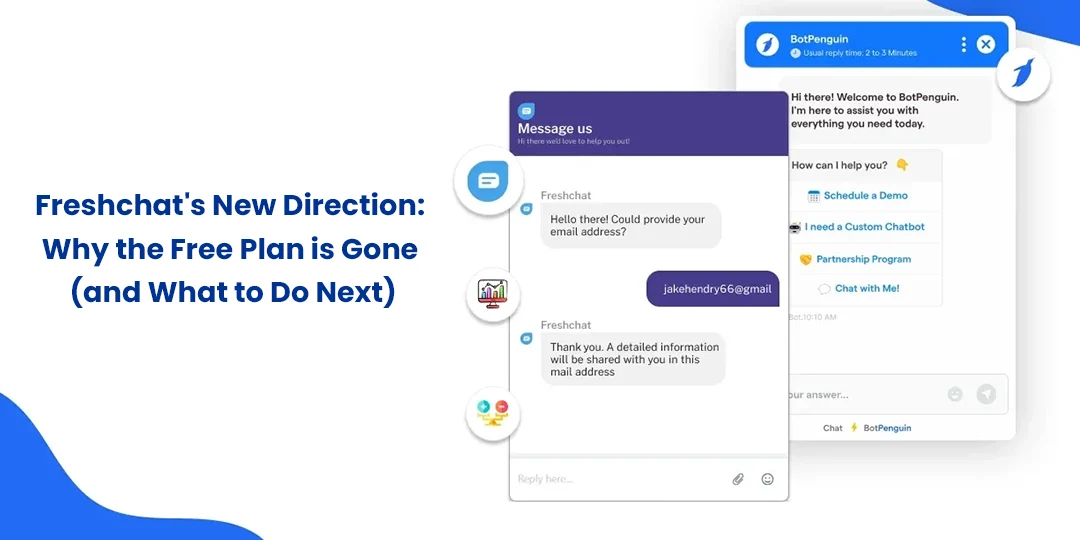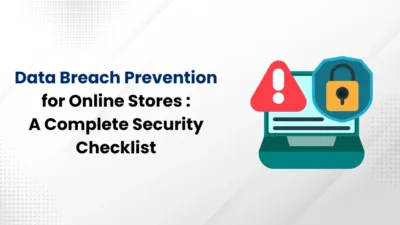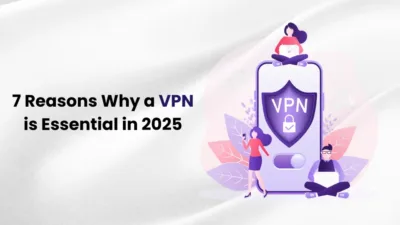This report provides a comprehensive analysis of Freshchat, detailing its recent strategic pivot from a freemium model to a paid, enterprise-focused suite. The report deconstructs the rationale behind the discontinuation of the free plan, examines the value proposition of the new paid tiers, and provides a balanced overview of the platform’s features, strengths, and weaknesses. A detailed competitive analysis against key market players—Zendesk, Intercom, and Tawk.to—is presented to clarify Freshchat’s strategic positioning. The analysis indicates that Freshchat’s recent changes are not merely a pricing adjustment but a fundamental shift in business strategy, aimed at attracting a higher-value, monetized customer base. The report concludes with a final verdict on Freshchat’s suitability for different user profiles, offering a nuanced recommendation for businesses considering the platform.
1. The Strategic Pivot: Freshchat’s Transition from Freemium to Enterprise-Focused Suite
1.1. The Discontinuation of the Free Plan: Rationale and Timeline
The discontinuation of the Freshdesk free plan, which includes Freshchat, is a significant event impacting thousands of small businesses, startups, and educational groups who previously relied on the service. The phase-out has already begun, with existing free plan accounts slated to be fully discontinued and deactivated by June 09, 2025, if no action is taken by the user. The company’s notification to its users frames the free plan as a tool designed to help them “explore the unique capabilities” of the platform. This phrasing suggests that the free tier was never intended as a permanent solution for businesses, but rather a temporary showcase for the product’s potential.
This move to sunset the free offering is not simply a pricing change; it represents a strategic decision by Freshworks to shift its focus from a broad, non-monetized user base to a more exclusive, value-driven, and monetizable audience. By eliminating the entry-level free tier, Freshworks is forcing a binary choice for its users: either upgrade to a paid plan and become a revenue-generating customer or find an alternative solution. This calculated risk demonstrates the company’s confidence that the advanced features and integrated value of its new paid platform can justify the potential loss of a large number of free users. It is a classic “grow up, not out” strategy, prioritizing an increase in revenue per user over a high user count.

1.2. The Freshworks Unified Platform Vision: A Move Towards a Holistic CRM
The decision to end the free plan is a direct consequence of a larger, company-wide pivot toward a comprehensive, all-in-one CRM suite. In April 2022, Freshworks launched its first “unified CRM for e-commerce companies,” which combines conversational messaging, marketing, sales, and customer support into a single solution with a “unified customer record”. This platform is built on a new foundation called “Freshworks Neo,” which is designed to eliminate “data silos” and provide a unified, 360-degree view of the customer. The objective is to enable personalized customer engagement, improved lead conversion, and accelerated sales growth.
A free, standalone live-chat tool would have created the very data fragmentation that the new Freshworks Neo platform is designed to eliminate. By guiding users toward the paid plans, Freshworks can onboard them into this new, integrated ecosystem, where they can be upsold on marketing, sales, and additional AI modules. This elevates the company from a provider of a single “point solution” to a full-fledged platform competitor against industry giants, thereby moving up the value chain. This strategic alignment underscores that the discontinuation of the free plan was a necessary step to execute the company’s long-term vision.
1.3. Transition and Impact on Legacy Users
The transition has caused significant friction and uncertainty for legacy free users. Community forums and user reports indicate a “wave of confusion” and a scramble for affordable alternatives. Users who received notifications of their account deactivation by June 09, 2025, expressed concern over the financial implications, with one user noting that for a “small IT Team in the current financial climate,” the money is a major concern. This sentiment suggests that the financial burden of the paid plans is a direct deterrent for the small-scale users who were the primary beneficiaries of the free plan.
The forum discussions also reveal that some users, despite the official emails, had not yet received notifications or banners regarding the discontinuation, leading to further confusion. This lack of a clear, public announcement suggests the company is managing the fallout with minimal fanfare, a strategy that aims to minimize public criticism while still guiding users toward the paid plans or off the platform. The situation has created a clear market opportunity for competitors who continue to cater to the freemium user base.
2. Deconstructing the Paid Model: Freshchat’s Value Proposition
2.1. The Business Case for the Paid Plan: Funding Innovation and Scale
The paid plan is the engine that funds Freshworks’ strategic growth, enabling the company to invest in the research and development necessary to compete with high-end platforms and advanced AI solutions. The company’s messaging around the paid plans emphasizes a return on investment (ROI), with claims of a “< 6 Months” payback period and an average three-year ROI of 225%. This framing shifts the value proposition from a free utility to a strategic investment that yields quantifiable business results.
The paid model monetizes the user base and provides the capital to develop sophisticated, high-value features, such as AI-powered chatbots (Freshbot) and the Freddy AI Copilot. This allows Freshworks to shift its focus from a simple service provider to a partner in its customers’ growth. The cost of these advanced features is then justified by their ability to reduce operational costs and increase customer satisfaction.
2.2. Core Benefits of the Paid Tiers
The value of Freshchat’s paid plans lies in their ability to automate and streamline workflows, directly addressing core “productivity killers” faced by growing support teams. The Growth plan, starting at $19 per agent per month, dramatically expands capabilities beyond the free tier, adding features such as shared canned responses, easy ticket splitting, and dynamic placeholders to auto-fill details. This plan introduces automation that directly saves time on common queries and reduces friction for both agents and customers.
Higher-tier plans, such as Pro and Enterprise, offer even more advanced functionalities. These include multilingual conversations, the ability to “Bring Your Own Channel” (BYOC), and sophisticated Freddy AI add-ons. The Pro plan, at $49 per agent per month, introduces Freddy AI Copilot, a feature that can speed up resolution by 38% and improve customer satisfaction by 6%. These features are essential for a team that has scaled beyond a handful of agents, as they enable a high degree of efficiency and a professional, unified customer experience.

2.3. Freshchat’s Pricing Structure and Add-on Modules
Freshchat has adopted a granular, modular pricing strategy based on a per-agent, per-month model, billed annually. While the base plans offer a comprehensive set of features, many advanced capabilities and usage-based services are priced as add-ons. These include Freddy AI Agent sessions, which are sold in packs of 1,000 for $100. Other add-ons include Freddy AI Copilot ($29 per agent per month), Day Passes for occasional agents ($2 per pass), and Connector App Tasks for third-party integrations ($80 for 5,000 tasks per pack).
This pricing strategy, while allowing for cost tailoring to specific needs, introduces complexity and can result in unexpected “hidden costs” for the customer. The Zendesk comparison article explicitly warns of these hidden costs in Freshdesk, which can include add-ons for reporting, automation features, and integrations. While the strategy maximizes revenue per user for Freshworks, businesses must carefully budget for these potential additional expenses as their usage scales.
3. Freshchat Product Deep Dive: Features and Capabilities
3.1. Core Live Chat and Messaging Features
Freshchat’s primary value proposition is a single, central hub for all customer conversations, transcending the limitations of a simple live chat widget. The platform offers a unified omnichannel experience with a team inbox that manages conversations from web chat, email, social media messengers (Facebook, Instagram), text messaging (SMS), and digital messengers like WhatsApp and Line. This ability to handle multiple channels in one interface is a key benefit, streamlining communication and allowing agents to manage conversations across different brands in one place. The platform also offers core features such as a pop-up chat widget, in-app messaging, and conversation archiving for future reference.
3.2. Automation and AI-Powered Capabilities (Freddy AI)
The platform’s integration of Freddy AI positions it as a solution for “shift left” customer service, where a high percentage of issues are resolved by automation before they reach a human agent. Freshchat features a low-code bot builder that allows for the creation of chatbots for 24/7 customer service. The Freddy AI Agent handles repetitive queries, while the Freddy AI Copilot is an agent-facing tool that provides real-time coaching, summarizes tickets and calls, and prioritizes conversations based on negative sentiment. This dual-pronged AI approach improves both the efficiency of the overall support system and the quality of human agent interactions. In addition to AI, the platform also offers robust automation features, including time-triggered rules, collision detection to prevent multiple agents from working on the same ticket, and scenario automation that allows for one-click execution of multiple actions.
3.3. Internal Collaboration and Workflow Management
Freshchat is not just a customer-facing tool; it is a system designed to optimize internal communication and efficiency for support teams. Key features include intelligent routing, which assigns tickets based on an agent’s skill, load, or via a round-robin system. This helps reduce manual processes and ensures that tickets are consistently directed to the right person or team. The platform also enables seamless escalation and collaboration, allowing agents to work with internal and external experts directly within the conversation pane, which leads to faster resolution times. The ability to share full customer profiles and conversation history across the team prevents redundant conversations and ensures complete context for every agent.
3.4. Integrations and Extensibility
Freshchat’s value is enhanced by its ability to integrate into a larger business ecosystem. It offers pre-built connectors for a wide range of third-party integrations, allowing for data synchronization and workflow automation. The platform is also natively integrated with e-commerce platforms like Shopify and is built on the Freshworks Neo platform, which provides an embedded customer data platform. This foundation allows businesses to create custom objects and apps with “simple clicks not code,” providing unparalleled extensibility and customizability to fit specific business needs.

4. Comprehensive Analysis: Strengths, Weaknesses, and Market Fit
4.1. Core Strengths (The “Pros”)
Freshchat is widely praised for its user-friendly and intuitive interface, which allows for quick onboarding and cuts down on training time. It provides a seamless, unified experience for managing multi-channel and multi-brand conversations from a single inbox. A core differentiator is the robust automation and AI features, particularly Freddy AI, which helps automate repetitive tasks and boost agent productivity. The platform also offers a predictable, session-based AI pricing model that is more cost-effective than a competitor’s pay-per-resolution model.
4.2. Identified Limitations (The “Cons”)
Despite its strengths, Freshchat has some identified limitations. Users have reported “unpredictable performance slowdowns and bugs” and “issues in already existing third party integrations”. The mobile app is noted to have fewer features than the desktop version, which can constrain workflows for teams on the go. The Zendesk comparison argues that the platform has a “disjointed” and “unintuitive” user experience for more complex tasks, requiring agents to use multiple browser tabs and constantly refresh pages. These issues, while minor for small teams, could become significant hindrances for a large, scaling organization.
4.3. Ideal User Profile and Market Segmentation
The ideal Freshchat customer is a small-to-mid-sized business (SMB) that has outgrown basic, free tools but is not yet at the scale or complexity of a large enterprise. The platform’s balance of ease of use, robust features, and predictable costs makes it a compelling choice for a business seeking to professionalize its customer service operations. Such a business can leverage the platform’s automation and AI to scale efficiently without a massive increase in headcount. Freshchat is positioned as the logical and necessary next step for these companies after they have outgrown a free solution.
Table 1: Freshchat Strengths and Weaknesses Summary
Strengths (Pros) & Weaknesses (Cons)
A concise comparison of the main strengths and weaknesses.
| Strengths (Pros) | Weaknesses (Cons) |
|---|---|
User-Friendly Interface: Intuitive and easy to set up, reducing training time for non-technical teams. | Reported Bugs and Performance Issues: Users have noted unpredictable slowdowns and bugs that can interrupt work. |
Robust Automation & AI: Powerful features like Freddy AI speed up workflows and automate repetitive tasks, leading to higher productivity. | Mobile App Limitations: The mobile app lacks features available on the desktop version, constraining flexibility. |
Predictable AI Pricing: The session-based model offers cost stability and can be up to 75% less expensive than competitors. | Limited Customization: The platform can constrain niche workflows due to limited customization options. |
Omnichannel & Collaboration: Unifies conversations from multiple channels in a single inbox, with advanced ticketing and collaboration tools. | Disjointed Interface: For complex tasks, some users find the experience disjointed and less intuitive compared to a centralized, all-in-one platform. |
5. Competitive Landscape: Freshchat vs. The Market
5.1. Comparison with Enterprise Competitors: Zendesk and Intercom
Freshchat is positioned as a viable alternative to both Zendesk and Intercom. The provided comparisons highlight how Freshdesk, which includes Freshchat, claims to be a better choice than Intercom due to its advanced ticketing capabilities and a more affordable and predictable AI pricing model. Freshdesk’s AI chatbot is priced at $100 for 1,000 sessions, while Intercom’s pay-per-resolution model can result in a cost of $495 for a comparable number of automated resolutions, making Freshdesk up to 75% less expensive.
Conversely, the Zendesk comparison presents a strong counter-argument, positioning Freshdesk as having a “disjointed interface,” “limited tools,” and a less mature AI ecosystem that is “disconnected from the broader platform”. Zendesk, having been trained on billions of real support interactions, claims its AI is more accurate and robust for modern CX needs at scale. This strategic narrative reveals that while Freshworks is actively competing on value and pricing against Intercom, it is often on the defensive against Zendesk’s claims of superior scalability and platform maturity.

5.2. Comparison with Freemium Competitors: Tawk.to
Tawk.to represents a direct and potent threat to Freshworks’ abandoned freemium market. Tawk.to’s primary advantage is its “Free Forever” plan, which offers unlimited agents, chats, and ticketing at no cost. It generates revenue by offering optional paid add-ons, such as branding removal and hired chat agents. This business model demonstrates that providing a core live chat service for free is a viable strategy, and Tawk.to is perfectly positioned to capture the influx of budget-conscious users left behind by Freshchat’s discontinuation of its free plan. While Tawk.to has limitations such as fewer advanced automations and less branding customization, it meets the core need for live chat at a zero-cost entry point.
5.3. Strategic Positioning and Differentiators
Freshchat is positioned as the “Goldilocks” solution for the mid-market: more sophisticated and feature-rich than a free tool like Tawk.to, but more accessible and affordable than enterprise giants like Zendesk. The platform’s key differentiators are its strong balance of a user-friendly interface with powerful, scalable automation and its predictable AI pricing model. By focusing on these core strengths, Freshworks has carved out a niche for itself as a compelling next-step solution for businesses that have outgrown basic tools and are ready to invest in professionalizing their customer service operations.
Table 2: Key Competitive Comparison
Feature Comparison
Comparing Freshchat, Zendesk, Intercom and Tawk.to across key dimensions.
| Feature | Freshchat | Zendesk | Intercom | Tawk.to |
|---|---|---|---|---|
| Business Model | Paid tiers with modular add-ons | Paid tiers with modular add-ons | Paid tiers with pay-per-resolution add-ons | Free core software with paid add-ons |
| AI Pricing Model | Session-based (predictable costs) | Purpose-built, pre-trained for CX | Pay-per-resolution (unpredictable costs) | Limited, less mature AI capabilities |
| Core Target Audience | SMBs and growing teams | Enterprise and large, complex teams | Startups and mid-market teams | Startups and budget-conscious teams |
| Key Strengths | User-friendly interface, robust AI, predictable pricing | Unified interface, strong scalability, mature AI ecosystem | Low entry price, conversational UI | Free Forever plan, unlimited agents, fast deployment |
| Key Weaknesses | Reported bugs, disjointed interface for complex tasks, mobile app limitations | Higher initial investment, less cost-predictable | Unpredictable AI costs, less mature ticketing | Limited branding, fewer integrations, inconsistent support |
6. Conclusion and Final Verdict
6.1. Synthesis of Key Findings
Freshchat’s recent strategic shift to a paid-only model is an intentional component of a larger vision to create a unified, AI-driven CRM platform. The company has made a calculated decision to abandon the freemium market, sacrificing a large base of small-scale users to focus on a monetized, value-driven audience. The paid plans are not simply a new price list; they represent a fundamental change in the platform’s value proposition, which now centers on providing advanced automation, efficiency, and a quantifiable ROI.
The competitive landscape for Freshchat is complex. It effectively leverages its predictable AI pricing and advanced ticketing to compete favorably against Intercom, which struggles with both unpredictable costs and a less mature ticketing system. However, it faces a significant challenge from Zendesk, which positions itself as superior in terms of scalability, unified interface design, and the maturity of its AI. The most profound consequence of Freshchat’s decision is the vacuum it has created in the freemium live chat market, which is now ripe for a competitor like Tawk.to to fill with its “Free Forever” model.

6.2. Final Recommendation: Is Freshchat a Good Option?
The final verdict on Freshchat is not a simple yes or no; it is a qualified recommendation based on a business’s specific stage of development and needs.
For Small Businesses and Startups with No Budget: Freshchat is no longer a viable option. For these teams, a solution like Tawk.to’s “Free Forever” plan is a superior choice that meets the core need for live chat without any cost.
For Growing SMBs with a Small to Moderate Budget: Yes, Freshchat is an excellent option. Its balance of a user-friendly interface with powerful, scalable automation, and its predictable AI pricing makes it a highly compelling choice. This platform is ideal for a business that has outgrown basic, free tools and is ready to professionalize its customer service operations and prepare for future growth.
For Large Enterprises with Complex Needs: Maybe, but with caution. While Freshchat’s vision for a unified CRM is powerful, the reported issues with performance, limited customization, and a potentially “disjointed” interface suggest that a more mature, enterprise-focused solution like Zendesk might be a safer, albeit more expensive, long-term investment. For these organizations, the total cost of ownership and the risk of outgrowing the platform could outweigh the benefits.





